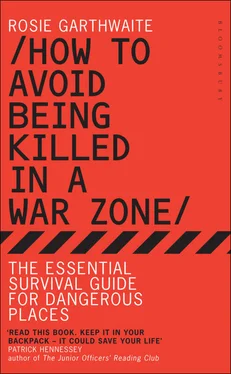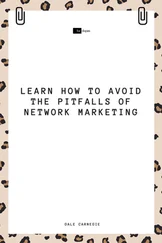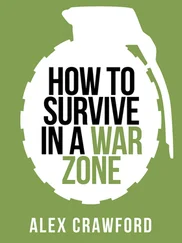‘On my longest trip to Pyongyang, in 1995, I accompanied a group of Korean–Canadians, who were there ostensibly to attend a sports festival. They actually hoped to see long-lost relatives whom they had last seen in 1950, before fleeing from invading North Korean forces with their parents.
‘In North Korea all foreign visitors, however they list their professions, are targets for propaganda. Visits get to be repetitious since you’re escorted to many of the same sights every time. Day one, your group will have to pay respects before the great bronze statue of Kim ll-sung, Kim Jong-il’s father, who died in 1994. You’re expected to bow respectfully while a member of your group tosses a bouquet at the base of the statue looming atop Mansudae, the hill that rises in the centre of Pyongyang. You’ll then visit the home where the late Great Leader grew up, and probably go to Panmunjom, the “truce village” that straddles the line with South Korea. From the North Korean side you’ll see tour groups on the South Korean side, while a North Korean officer tells you how the South Koreans and the Americans started the Korean War. And you’ll learn that North Korea inflicted terrible defeat on the “enemy” before they had to “surrender” in the armistice signed at Panmunjom in July 1953. You’ll also hear more about the “crimes” committed by the vanquished Americans during a visit to the war museum in Pyongyang, another standard stop.
‘The highway to Panmunjom is an eye-opener. It’s four lanes wide, but you’ll see hardly any traffic on the four-hour journey – just the occasional oxen pulling ploughs in distant fields. You’re likely to notice only one or two tractors, most likely manned by soldiers, as you pass by whitewashed buildings with few visible signs of life and no evidence of manufacturing or commerce. You won’t be able to get close to any of these, and you’re constantly warned not to take photographs anywhere that might seem to present a negative view of life in the country. Again, that’s the type of offence that could bring about expulsion along with confiscation of your film or videotape and possibly your equipment.
‘You get your first taste of the hazards of visiting Pyongyang when you’re told on arrival to hand over your cell phone. You’re sure to get it back before your departure, but until then you can forget about phone calls unless you want to spend inflated fees on a hotel landline, which you can be sure is tapped. After your tour guide meets your group and you’re seated in the van at the airport, you’re told to be sure not to throw away any newspapers and magazines. That’s because they all feature photographs of Kim Jong-il and Kim ll-sung, and it would be an act of extreme disrespect to sully either of their images by crumpling them up and tossing them into a waste-paper basket. Tourists get expelled for just this offence, and ordinary citizens have gone to jail for years for such a heinous crime.
‘Before you ever are exposed to these difficulties, however, you will have had to go through the hassle of getting a visa. You must apply through a travel agency in Beijing or possibly Australia, and there’s no certainty you will be able to take the trip at a time that’s convenient. All four of my visits were for special occasions. In 1992 I accompanied a large group on a tour by train to the special economic zone at Rajin and Songbon in the northeast. The zone has been a failure, but at the time North Korean authorities wanted to publicize the zone’s potential. On my three subsequent visits, I attended lavish festivals. The most spectacular is the Arirang festival, a display of 100,000 performers, half of them in the stands forming images with flash cards, the other half on the field going through an amazing series of routines. They perform night and day for weeks.
‘At one time tourists were able to go to Kumkang Mountain on regular visits arranged by travel agencies, crossing the border from South Korea by bus and van, after an elaborate customs procedure. However, the tours ended tragically in July 2008 when North Korean guards shot and killed a middle-aged South Korean woman who had wandered outside the tourist area to look at the sunrise. There could have been no better evidence of the horrors of life in North Korea – and the hazards of visiting the country even on a tightly constricted, organized tour.’
When one of my colleagues at the Baghdad Bulletin went to Yemen to brush up her Arabic, I decided to pay her a visit and had my preconceptions about Yemen blown out of the water. Little is known or written about this magical country, an ancient world struggling to adapt to modern times. It has achieved notoriety because most of the Guantanamo detainees were Yemeni, many picked up in Iraq and Afghanistan. Also, the 2009 ‘Christmas bomber’ was trained in Yemen. But the extreme views of those men, born out of uneducated, crippling poverty that is the wider fight in Yemen, hold sway with only a minority of the population.
Mystery and fear mean that the country has few foreign visitors, but my friend was accepted and embraced by the local population, her boyfriend too. I had just a peek, but they really lived in a medieval world. Due to the sensitivity of her current role in the region, she has decided to give her advice anonymously.
‘The first thing most visitors to Yemen have to survive is the landing at Sana’a international airport. At an altitude of around 2400 metres and ringed by jagged peaks, it’s rumoured to be one of the trickiest landings in the world. For the eager first-timer craning to get a glimpse of Yemen, the rusting Tupolev carcasses beached casually by the side of the runway provide scant reassurance.
‘A pin-cushion of minarets, the tiny walled city of Old Sana’a is straight out of A Thousand and One Nights : wedding-cake houses, turbaned men dancing with daggers, camels grinding corn, and the deafening call to prayer as each muezzin tries to drown out his neighbour with throat-searing flourishes. And many of the dangers are equally archaic. Acid has been thrown at women wearing the trendy, black, Saudi burka because the silhouette of their chest is more visible than under the traditional multi-coloured chador . A boy who lived near me was horrifically scarred after his father set fire to him for talking to a girl who wasn’t a relative. There are also the never-ending tribal skirmishes, which are often lethal in a country where almost every man and boy has a gun. But these are dangers faced mainly by Yemenis.
‘The increasing terrorist threat aside, most visitors encounter few problems. You should take advice from a local tour agent and your embassy before arriving, but generally the north is off limits to foreigners. The situation in the rest of the country is very variable. Yemen still abides by the old codes of honour and hospitality, and discourtesy to a visitor is a shame on the community. Standards of conduct are rigorously imposed on the young, as I learnt from one twinkling old woman on a bus. “Young men are wild beasts these days,” she said, lifting her voluminous chador to show me a stash of rocks that she would hurl from the mini-bus window at any young man she saw behaving inappropriately. Even modern problems have old-fashioned solutions in Sana’a. With the same logic, while many female visitors don’t wear a headscarf, if you do, you’ll gain respect and be given greater protection.
‘No introduction to Yemen would be complete without a mention of qat , the mild amphetamine that many Yemeni men spend their days ruminating. Your cheeks may never be quite the same after a good qat hamstering, nor will you probably sleep for a day afterwards, but most casual users experience very little. With qat you have to cultivate addiction. And for most, one evening with a mouth rammed full of leafy cud while suffering insatiable thirst is enough.’
Читать дальше




![Джонатан Димблби - Barbarossa - How Hitler Lost the War [calibre]](/books/385421/dzhonatan-dimblbi-barbarossa-how-hitler-lost-the-w-thumb.webp)







